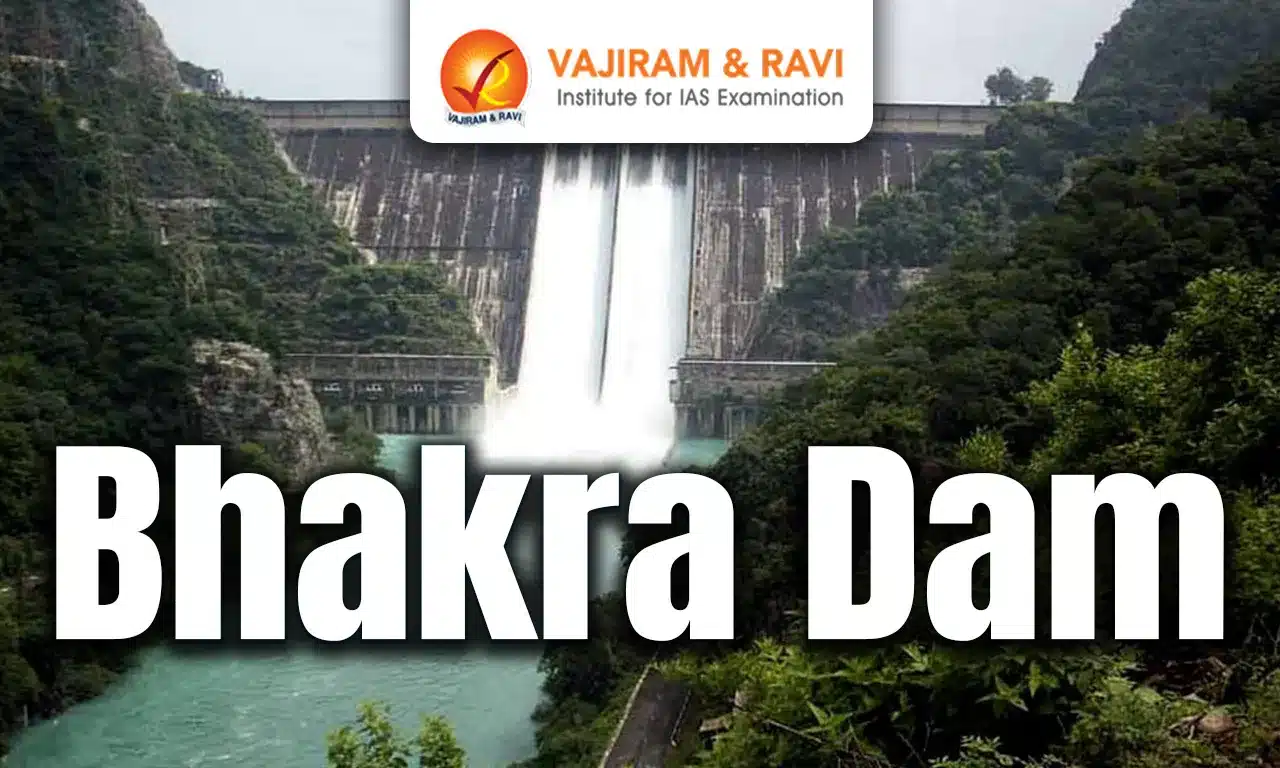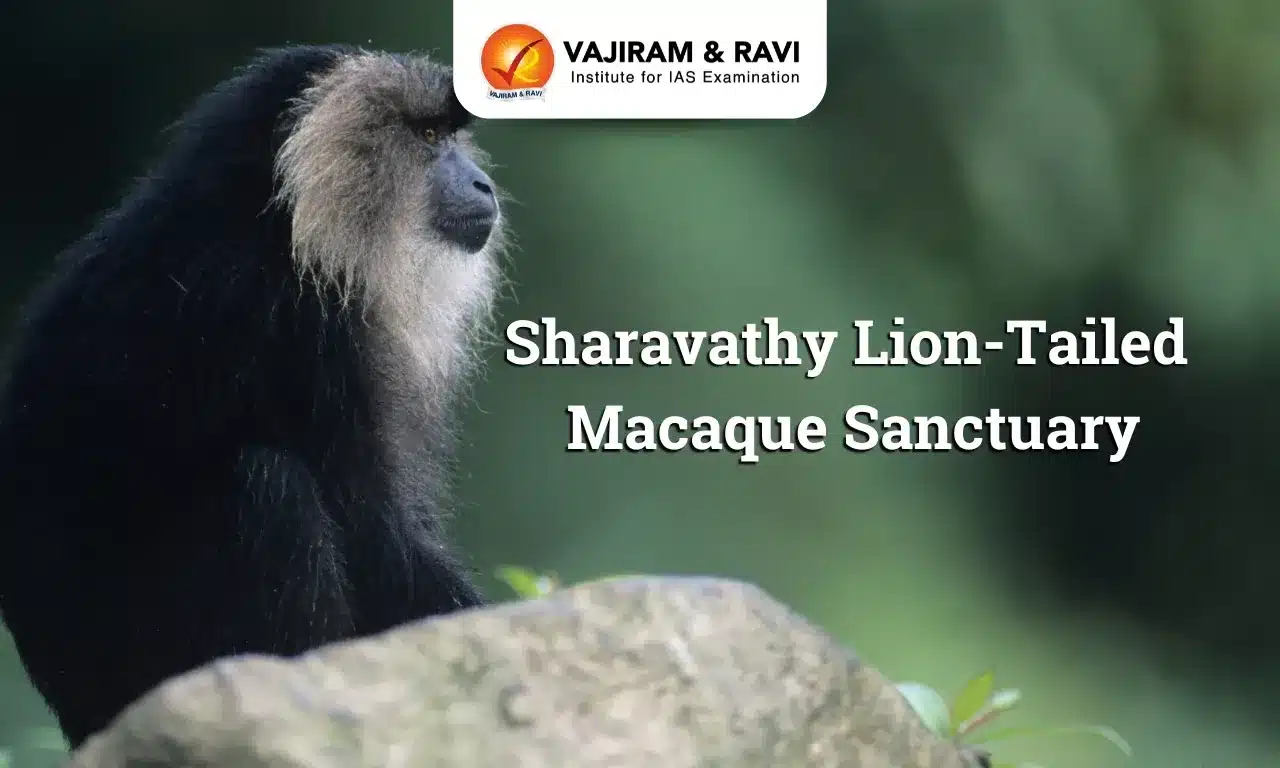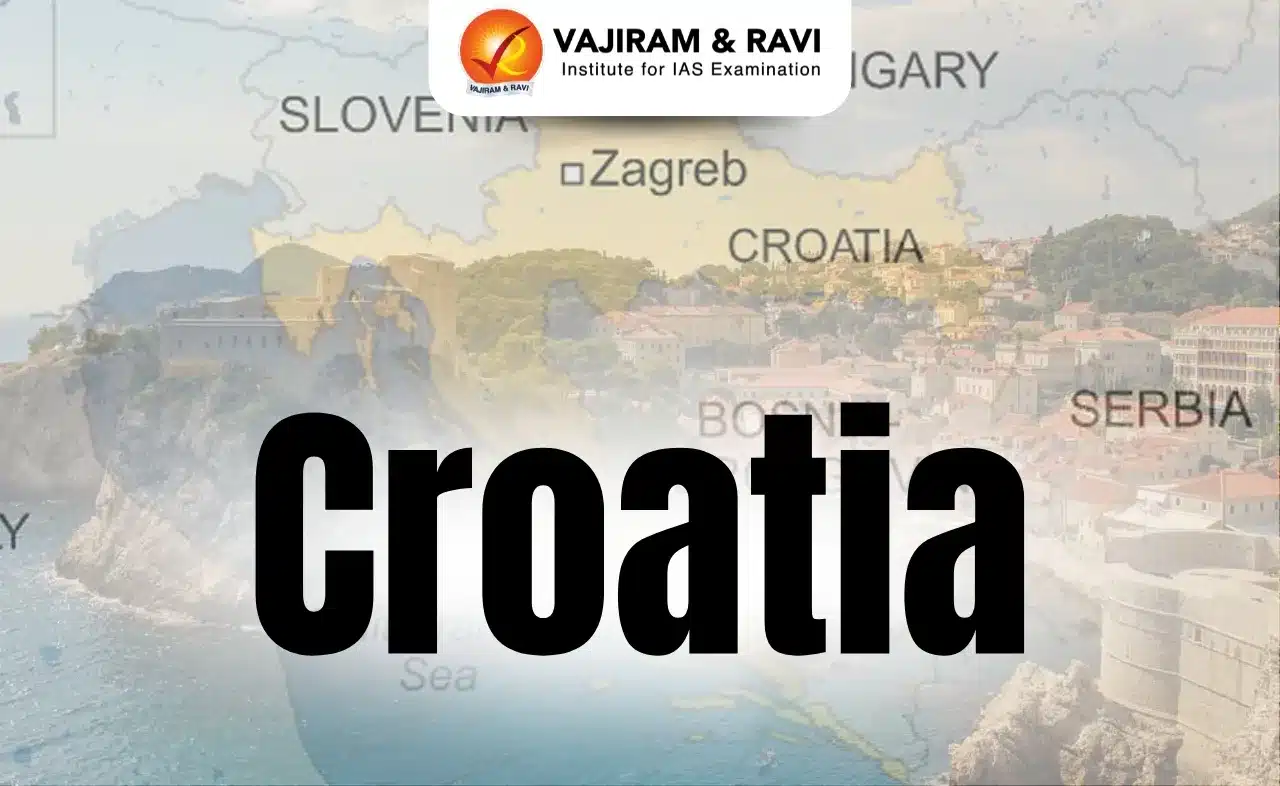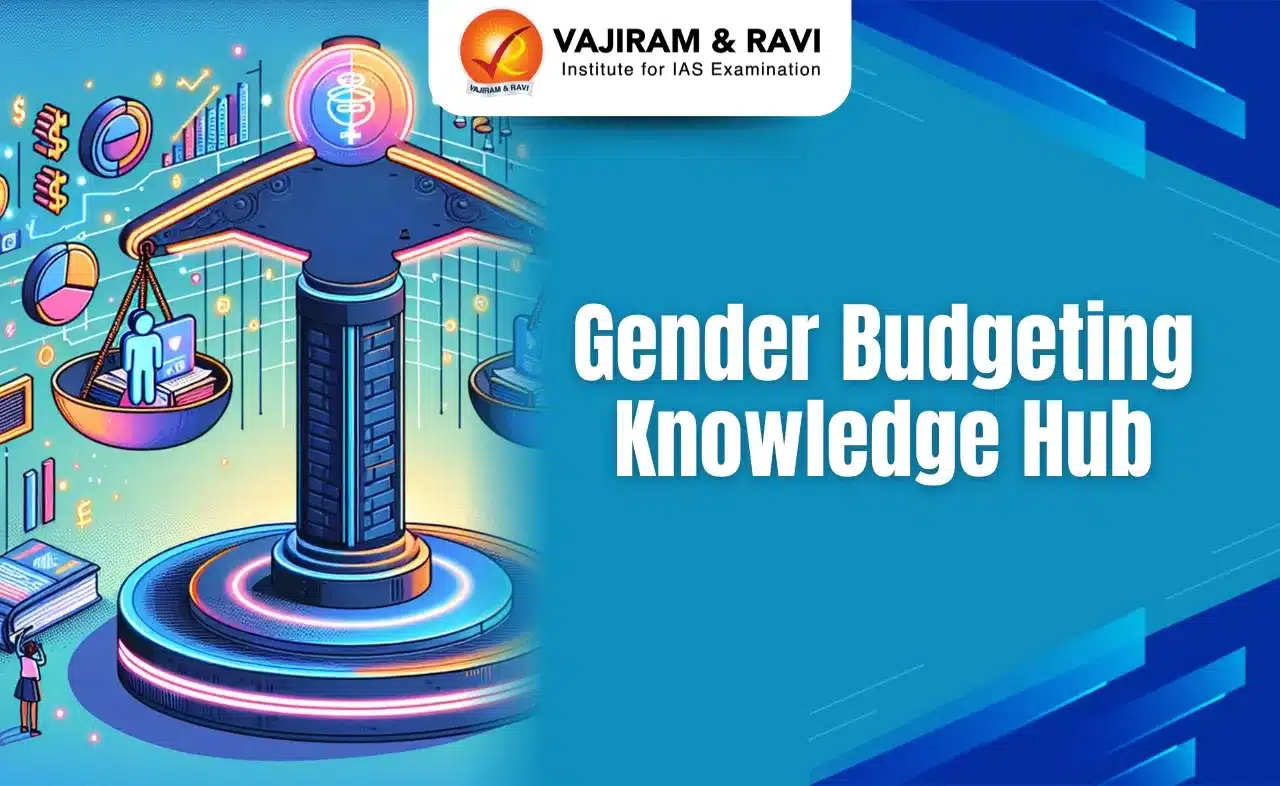Bhakra Dam Latest News
Cutting across political lines, all Punjab parties recently unanimously decided not to spare a single drop of additional water to Haryana from the Bhakra dam.
About Bhakra Dam
- It is a concrete gravity dam across the Sutlej River and is near the border between Punjab and Himachal Pradesh.
- It is located at a gorge near the upstream Bhakra village in the Bilaspur district of Himachal Pradesh.
- It is the highest straight gravity dam in the world, with a height of about 207.26 meters.
- It is Asia’s second tallest dam, next to the 261m Tehri Dam, also in India.
- It has a length of 518.25 (1,700 ft) meters and a width of 9.1 meters (30ft) approximately.
- History:
- The Bhakra Dam is one of the earliest river valley development schemes undertaken by India after independence.
- The construction of this dam started in 1948, when Jawahar Lal Nehru, the first prime minister of India, poured the first bucket of concrete into the foundations of Bhakra.
- The dam was completed by the end of 1963.
- Bhakra Dam was described as the ‘New Temple of Resurgent India’ by Jawaharlal Nehru.
- Operation and maintenance of the Bhakra dam is done by the Bhakra Beas Management Board (BBMB).
- Its reservoir, known as the “Gobind Sagar”, stores up to 9.34 billion cubic meters of water.
- The 90 km long reservoir created by the Bhakra Dam is spread over an area of 168.35 sq.km.
- In terms of storage of water, it is the second largest reservoir in India, the first being Indira Sagar Dam in Madhya Pradesh with a capacity of 12.22 billion cu m.
- Nangal Dam is another dam downstream of Bhakra Dam. Sometimes both the dams together are called the Bhakra-Nangal Dam though they are two separate dams.
Source: NIE
Last updated on June, 2025
→ UPSC Notification 2025 was released on 22nd January 2025.
→ UPSC Prelims Result 2025 is out now for the CSE held on 25 May 2025.
→ UPSC Prelims Question Paper 2025 and Unofficial Prelims Answer Key 2025 are available now.
→ UPSC Calendar 2026 is released on 15th May, 2025.
→ The UPSC Vacancy 2025 were released 1129, out of which 979 were for UPSC CSE and remaining 150 are for UPSC IFoS.
→ UPSC Mains 2025 will be conducted on 22nd August 2025.
→ UPSC Prelims 2026 will be conducted on 24th May, 2026 & UPSC Mains 2026 will be conducted on 21st August 2026.
→ The UPSC Selection Process is of 3 stages-Prelims, Mains and Interview.
→ UPSC Result 2024 is released with latest UPSC Marksheet 2024. Check Now!
→ UPSC Toppers List 2024 is released now. Shakti Dubey is UPSC AIR 1 2024 Topper.
→ Also check Best IAS Coaching in Delhi
Bhakra Dam FAQs
Q1. On which river is Bhakra dam?+
Q2. Is Bhakra dam the highest dam in India?+
Q3. What type of dam is the Bhakra Dam?+
Tags: bhakra dam Prelims Pointers upsc prelims current affairs
























